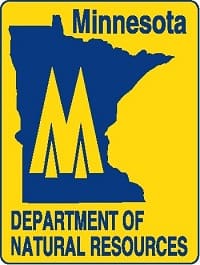Illegal Deer Baiting on the Rise; Minnesota DNR Stresses Penalties

As the number of citations issued for deer baiting has reached an all-time high, the Minnesota Department of Natural Resources (DNR) reminds Minnesota deer hunters to review regulations before heading to the field this fall.
Changes in the regulations last year affect penalties for deer baiting, which continues to plague the sport. “We’re seeing increased numbers of convictions for deer baiting while at the same time the penalties have increased,” said Col. Ken Soring, DNR enforcement director.
Deer baiting is placing food near deer stands or clearings with the intent of luring a deer into close shooting range. It has been illegal to bait deer in Minnesota since 1991.
DNR conservation officers issued 166 citations and 49 warnings while confiscating 135 firearms and bows during the 2012 bow, firearms and muzzleloader big game seasons. It’s the highest number of baiting citations and confiscations issued during the deer hunting seasons since the DNR began tracking these violations in 1991.
“It was apparent that a fine and forfeiture of a firearm or bow was not enough to curtail the activity,” Soring said. “In order to show the seriousness of the offense, hunters are also subject to license revocation when convicted of baiting deer.”
The penalties for baiting include:
- A person may not obtain any deer license or take deer under a lifetime license 1 year after the person is convicted of hunting deer with the aid or use of bait. The DNR’s Electronic Licensing System (ELS) will also block a person’s ability to buy a license. A second conviction within 3 years would result in a 3-year revocation.
- The revocation period doubles if the conviction is for a deer that is a trophy deer scoring higher than 170 inches.
Soring reminds hunters it is illegal to take deer with the aid or use of bait and encourages hunters to direct their efforts towards traditional and ethical hunting techniques like scouting for the best hunting locations. Enjoy a safe hunt that includes fair chase as a part of a proud hunting heritage in Minnesota.
Bait includes grains, fruits, vegetables, nuts, hay, or other food capable of attracting or enticing deer and has been placed by an individual.
Liquid scents (example: doe in heat), sprays, salts, and mineral are not bait if they do not contain liquid or solid food products.
“Read the ingredient label on all products prior to use since many products contain food or attractants such as grains, fruits, and sugar derivatives,” Soring said. He added if a salt or mineral product has anything other than salt or mineral in it, it is illegal to use for hunting.
“There are still people who think that just because they can buy an attractant off the shelf, then it must be legal in the state. It is not. Read the label carefully before making your purchase,” Soring said.

